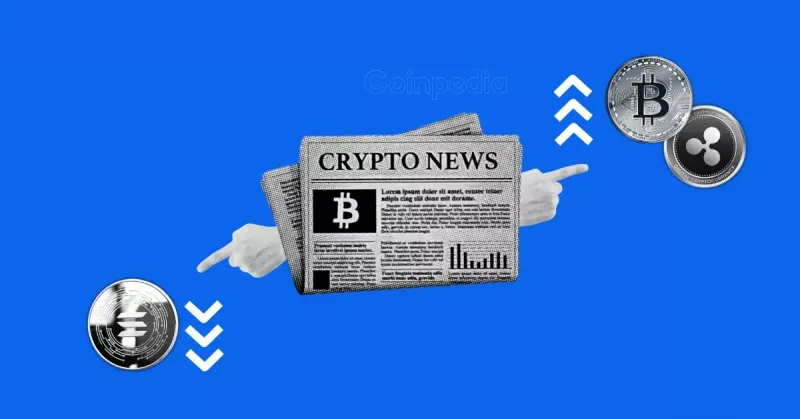If you’re reading this, you probably have some idea of Web3’s current achievements, as well as how this incredible technology is capable of changing entire industries. If you are directly involved with using Web3 applications, you are probably also well aware of some key limitations. These are the roadblocks that are preventing Web3 utilization from enhancing countless different business models and disrupting everything from finance to gaming to data to commerce.
It’s true that Web3, and more accurately the blockchain technology that acts as a foundation, has come a long way from a few key tokens and whitepapers. Even if there is a misunderstanding of what Web3 really is, the majority of people have at least heard of blockchain, Bitcoin, NFTs, or other related aspects. What is frustrating though is that the few things the average person thinks they know about blockchain are at best highly sensationalized, and at worst completely wrong. This has painted the entire industry in a bad light, and there is a vacuum of steady progress that keeps these new innovations from filling it and showing the general public what Web3 already is, and what it can be.
Part of this struggle is natural, and other highly advanced fields such as AI are working through a similar path. For Web3, it’s worth noting that the vision of what it can do is fairly clear, with many different platforms sharing how they see the industry moving forward, and many of those visions overlapping. We can see how Web3 can build up current business models like the travel industry, solve “unsolvable” problems for supply chain data integrity, use NFTs for far more than pixelated art, and energize a financial industry that is showing its cracks with age and stagnation.
Limited by Liquidity
So, what is standing in the way? For Web3, it’s complexity and connectivity. The decentralized nature of blockchain is both its greatest strength and biggest barrier to mass adoption. Having countless chains instead of a single, uniform infrastructure is at the core of what makes Web3 amazing. But connecting those chains safely, quickly, and seamlessly (all while staying decentralized) is an unbelievably difficult task. The Web3 community, thankfully, is made of individuals and teams who were born to take on challenges and solve them unconventionally, and the industry has made significant strides in turning the speckled landscape of chains into a fully interconnected ecosystem. There is still a long way to go, but the industry is making progress.
One of the biggest obstacles with a decentralized industry has always been access to liquidity. With a traditional industry, you have those who invest in work to be done, and those who use that liquidity to get work done and build a return for investors. With a scattered and decentralized industry, the liquidity model is fragmented. A large, solid chain can build up liquidity for its users. However, single chains that remain L1 for their users quickly run into scalability issues, so chains find different ways to build up an ecosystem using L2s, L3s, parachains, and other architectures. Each has strengths and weaknesses, but the biggest weakness is losing access to a single pool of liquidity. This can kill off an otherwise excellent platform/dApp overnight.
So what can be done? Well, one of the most exciting innovations around chains has been the introduction of virtual chains. This setup allows dApps and other platforms to create all the value they would have if they set up a completely customizable chain, adjusting the many different parameters to exactly what they need for their platform. The difference is, there is a massive time, money, and talent cost toward creating your own chain, not just initially but with ongoing maintenance. There’s also the key limiting factors of ensuring your software is heavily resilient to attacks, is big enough to garner liquidity, and is distributed enough to have a wide spread of nodes (preventing takeover or manipulation). This is a lot to ask. Virtual chains are especially interesting because they allow a platform to essentially plug into a network that already has the security, distribution, the nodes, and other critical elements like bridges, oracles, etc. This is a true game changer, and it’s no surprise that virtual chains are making a big splash.
The downside, unfortunately, is that there isn’t a clear path to virtual chain liquidity. At least, there wasn’t a clear path. This seems to be changing, however, with the introduction of “Forwarder Support.”
Aurora, the network leading this innovation, is releasing their Forwarder with very positive results so far, and what looks to be an avalanche of platforms jumping in line to use it. In a recent post about the Aurora Forwarder, the platform highlights the direct and embedded line to CEX liquidity, which is a lifeline for gaming applications, RWA projects, and DeFi alike.
CEX Liquidity for your Virtual Chain is one click away with the new Forwarder embed. Try it out on Aurora Cloud Console!
— Aurora (@auroraisnear) March 24, 2025
👉 https://t.co/sTUVbmYv4o pic.twitter.com/esmn4mepTY
This type of solution, which will likely be adopted by other large platforms if they can figure out how to develop their own versions, clicks the last puzzle piece in place for the virtual chain model. It reaches into CEX connectivity directly using its own interface, with a no-code solution no less, and allows the end users to access exchange liquidity directly without users leaving the application AND without the platform having to list on the CEX. This is a game changer because listing can take months and incurs heavy fees, while users having to leave the platform for the CEX quickly ruins the best-designed User Experience and hurts the dApp’s ability to build up and support its customers.
What’s Next?
The implications for this solution are vast, and it will be exciting to watch this innovation take hold. Virtual chains that are tied to a Forwarder truly offer the best of both worlds: seamless integration for platforms in a way that avoids massive amounts of platform development; and a direct link to large sources of liquidity. Is there a downside here? So far there doesn’t seem to be. This could very well be one of those steps in evolution that most platforms simply adopt because it’s the obvious solution, and a year from now we all wonder how we ever survived without it.
 Nikolas Sargeant
Nikolas Sargeant






